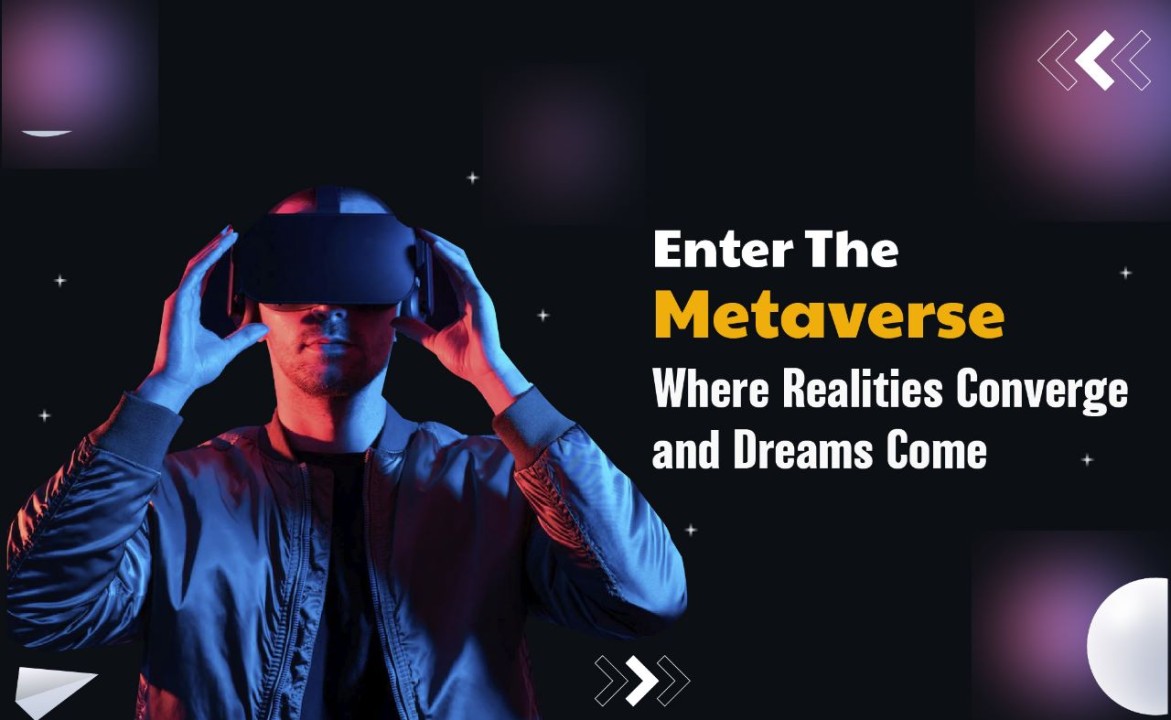The Metaverse: Where Digital Dreams Become Reality
The term “metaverse” has been buzzing in the digital world, igniting imaginations and sparking discussions about the next frontier of the internet. But what exactly is the metaverse, and why is it garnering so much attention? In this blog post, we will explore the metaverse, its technologies, real-world examples, and the myriad possibilities it holds for our digital future.
Unveiling the Metaverse
At its core, the metaverse is a persistent, interconnected digital environment designed to offer immersive experiences to its users. Picture a world where the boundaries between the physical and virtual realms blur, allowing you to interact, create, share, and experience digital content like never before. The metaverse is not confined to a single platform or technology; instead, it comprises a network of interconnected spaces spanning different domains and dimensions.
Technologies Powering the Metaverse
Several groundbreaking technologies are propelling the development of the metaverse:
- Virtual Reality (VR): VR creates simulated environments that users can experience through head-mounted displays (HMDs) or other devices, immersing them in entirely new worlds.
- Augmented Reality (AR): AR overlays digital information or objects onto the physical world, enhancing the user’s perception of reality through smartphones, tablets, glasses, or other devices.
- Mixed Reality (MR): MR combines elements of VR and AR, creating a hybrid reality where physical and digital coexist. Users can manipulate both real and virtual objects, seamlessly transitioning between different environments.
- Blockchain: Blockchain technology underpins the security, transparency, and trust required for the metaverse. It also enables new forms of digital ownership, identity, and economy.
- Artificial Intelligence (AI): AI enhances the metaverse with smart agents, content generation, personalization, and optimization, making the digital realm even more immersive and interactive.
Real-world Examples of the Metaverse
- “Ready Player One”: This science fiction novel turned movie by Ernest Cline and Steven Spielberg envisions a fully immersive VR world known as OASIS. Here, people can explore, play, socialize, and compete in various challenges and quests, escaping from the confines of a dystopian reality.
- Fortnite: What started as an online video game has evolved into a social platform and cultural phenomenon. Fortnite offers various gameplay modes, hosts live events like concerts and movies, and collaborates with celebrities and brands, blurring the lines between gaming and social interaction.
- Roblox: Roblox is an online platform where users can create and play games using Lego-like blocks. It boasts over 50 million user-created games across various genres and supports social features like chat, voice, and customizable avatars.
- Facebook Horizon: Developed by Meta (formerly Facebook), Facebook Horizon is an upcoming VR social platform. It aims to provide a sandbox environment where users can create their own worlds and experiences, with integration planned across other Meta products.
- The Sandbox: This decentralized gaming platform utilizes blockchain and NFTs (non-fungible tokens) to empower users to create voxel-based games and assets. It fosters a thriving community of creators and players, blurring the lines between gaming and ownership.
https://synapsefabric.com/2023/09/11/nft-non-fungible-token-redefining-digital-ownership-and-expression/
Challenges and Opportunities Ahead
The metaverse is not without its hurdles:
- Technical Challenges: Meeting the high-performance computing, networking, and rendering demands for realistic, cross-device experiences. Addressing issues like interoperability, scalability, latency, security, privacy, and accessibility are also key.
- Social Considerations: The metaverse involves human interactions that can have both positive and negative impacts. Content moderation, abuse prevention, intellectual property protection, diversity, inclusion, and digital well-being must be addressed.
- Economic Disruptions: The metaverse is creating new forms of value and revenue streams, disrupting traditional industries and markets. Creators, developers, platforms, advertisers, and consumers are all affected.
Embracing the Metaverse’s Potential
The metaverse offers a world of opportunities:
- Entertainment: It introduces more engaging, interactive, and personalized forms of entertainment, reshaping storytelling, artistry, creativity, and expression.
- Education: The metaverse revolutionizes education, providing immersive, collaborative, and experiential learning experiences, fostering knowledge acquisition, skill development, and lifelong learning.
- Work: New ways of working are emerging in the metaverse, offering flexibility, productivity, and innovation, along with enhanced collaboration, communication, and coordination.
- Commerce: The metaverse transforms commerce, making it more convenient, efficient, and transparent, while enabling novel consumption, production, and distribution methods.
The metaverse is not a far-off fantasy but a tangible reality being molded by various technologies and visionaries today. It represents a digital frontier where our physical and virtual lives converge, promising endless possibilities and transformations in how we create, connect, and experience the digital realm. The metaverse is here, and it’s poised to redefine our digital future.






